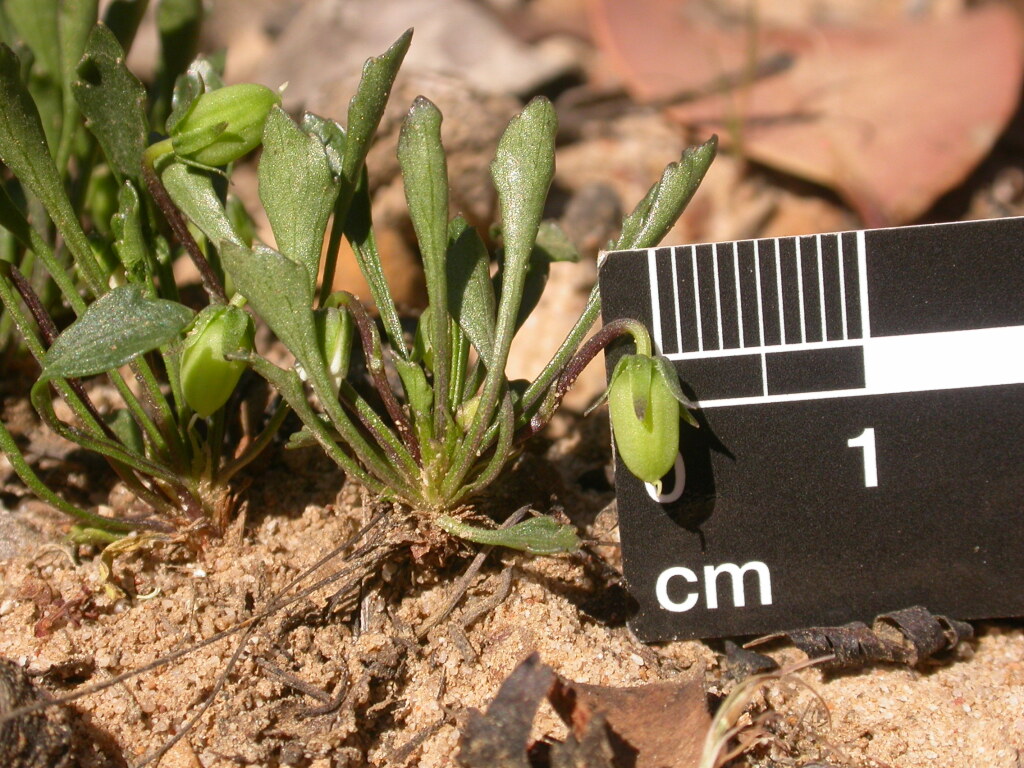Viola cleistogamoides
(L.G.Adams) SeppeltRhizomatous perennial herb, glabrous to slightly pubescent. Leaves tufted; lamina ovate, obovate or rhombic, 5–15 mm long, 3–10(–15) mm wide, base cuneate and tapering to petiole; apex obtuse; margins broadly toothed; petioles narrowly winged, 0.5–2 cm long; stipules free, linear-lanceolate, 1–7 mm long, laciniate. Flower-scapes 5–25 mm long, shorter than leaves, bracteoles mostly above middle. Sepals lanceolate, c. 3 mm long, acute, basal appendages small; petals 2–3 mm long, cream, sometimes with a purplish tinge, lower (anterior) petal linear-oblong, c. 1 mm wide, without spur, lateral petals entire, bearded. Capsule ovoid, 3–5 mm long. Flowers Sep.–Nov.
Wim, GleP, VVP, GipP, OtP, WaP, Gold, CVU, GGr, DunT, EGL, EGU, WPro, HSF, HNF, OtR, Strz. Also SA, NSW, Tas. Occurs in wettish heathland on sand, but also on skeletal soils in dry forest and woodland, mostly near-coastal.
Although the flowers resemble cleistogamous flowers in having reduced petals, they apparently open before shedding pollen.
Entwisle, T.J. (1996). Viola. In: Walsh, N.G.; Entwisle, T.J., Flora of Victoria Vol. 3, Dicotyledons Winteraceae to Myrtaceae, pp. 82–84. Inkata Press, Melbourne.
 Spinning
Spinning


